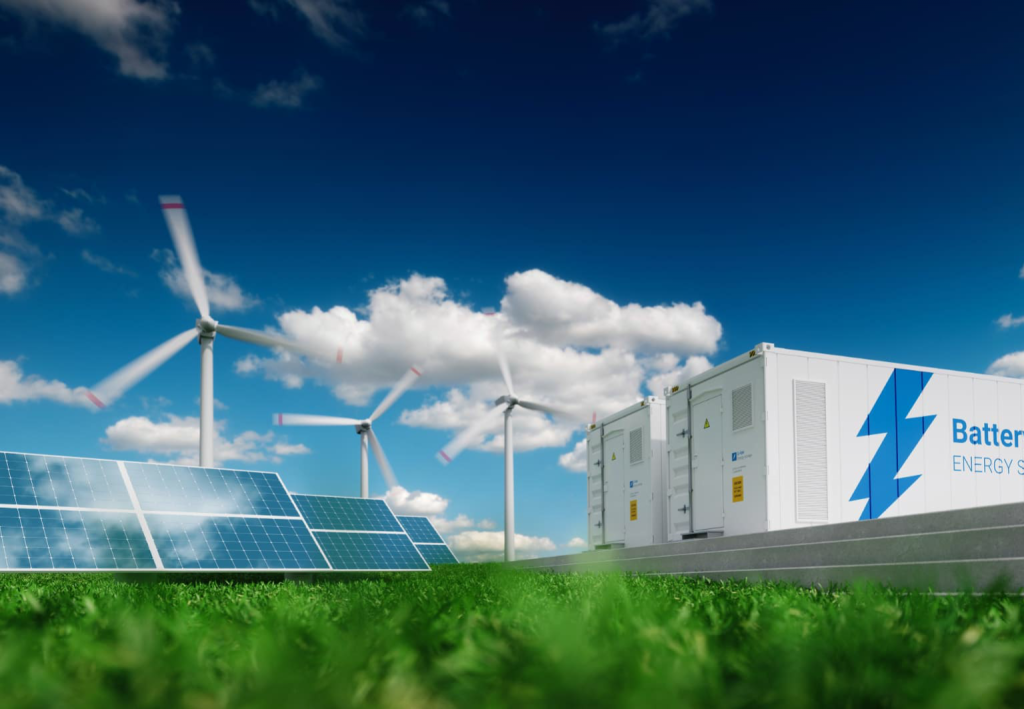Climate change and population growth are posing a global challenge. How to stop global warming and increase energy consumption while protecting the climate? The All Electric Society vision aims for a sustainable, affordable energy system where renewable sources, such as sun, wind, and water, are used. Researchers at Oregon State University predict that photovoltaics could cover all energy requirements globally, using less than 1% of the earth’s surface. However, achieving this energy revolution requires extensive renewable energy expansion of renewable energy and the technological approach of sector coupling.

Sector coupling
Sector coupling involves the comprehensive electrification, networking, and automation of all relevant areas of our lives and economies. Including industry, energy, mobility, infrastructure, and buildings. In the All Electric Society, these sectors are networked to create a self-controlling system that optimizes energy efficiency and energy savings by balancing loads, producers, and storage systems. This ensures stability and availability of power supply without excess capacity. Making energy storage systems a core element of sector coupling.
The role of energy storage systems in an All Electric Society
To ensure a stable power supply based on renewable sources like sun, wind, and water, reliable storage systems are necessary. There are various technologies for temporarily storing electrical energy, with the main difference being their physical principles. Mechanical storage converts electrical energy into mechanical energy. While purely electrical storage uses capacitors or inductors. Electrochemical storage uses electrochemical potentials and electrolytes to store electrical energy in batteries. Thermal storage generates heat and drives electrical generators.

Energy storage technologies
Mechanical energy storage systems, such as pumped-storage power plants and gravity storage, have low energy density and high investment costs. Making them suitable for short-term storage solutions. Capacitors are the most prominent purely electrical energy storage devices, with their high cyclic stability and ability to absorb and release energy quickly. Induction storage systems, based on deep-cooled superconducting coils, have low energy density and high operating costs, making them suitable for special applications involving extreme power peaks.
Electrochemical energy storage units, such as batteries, are classic electrochemical units characterized by electrode materials. Lithium-ion batteries have the highest market share in e-mobility and stationary applications, with over 90% market share. Redox flow batteries, which separate electrolyte from electrodes and store it in tanks, have lower energy density and higher operating costs.
Hydrogen-based technologies, such as green hydrogen, are widely used in purely chemical energy storage systems. These systems release hydrogen from a chemical bond, producing energy-rich gases or liquids like methane, methanol, kerosene, and ammonia, which can be stored, transported, and used similarly to their fossil counterparts.
Efficiency losses in the hydrogen process chain
Water electrolysis produces green hydrogen by splitting water into hydrogen and oxygen using electricity. Further processing requires additional energy, with only some being reused. The more conversion steps, the higher energy losses that occur, which typically waste heat, reducing overall process efficiency.

Which storage systems are suitable for sector coupling?
Electrical energy from sources like the sun, wind, and water should be used directly, as efficiency losses increase generation capacity. The energy revolution is crucial for limiting climate change. Battery storage systems are preferred for storing energy quantities in the gigawatt hour range, while hydrogen-based processes are preferred for storing surplus energy over weeks or months. In industries like steel and cement production and transportation, hydrogen and hydrogen-based products are the best way forward based on current technology.

Energy storage applications
Battery storage is crucial in the mobility sector for operating electric motors and auxiliary units. In hydrogen-based mobility, batteries are used as fuel for internal combustion engines or powering fuel cells, ensuring a purely electric drive. They support fast charging and can help stabilize public distribution grids, cap peak loads, and balance renewable energy carriers. Power trading is also becoming more commercially relevant, storing energy at low producer prices for profit during high demand.

Read more about reliable components for battery storage systems.

